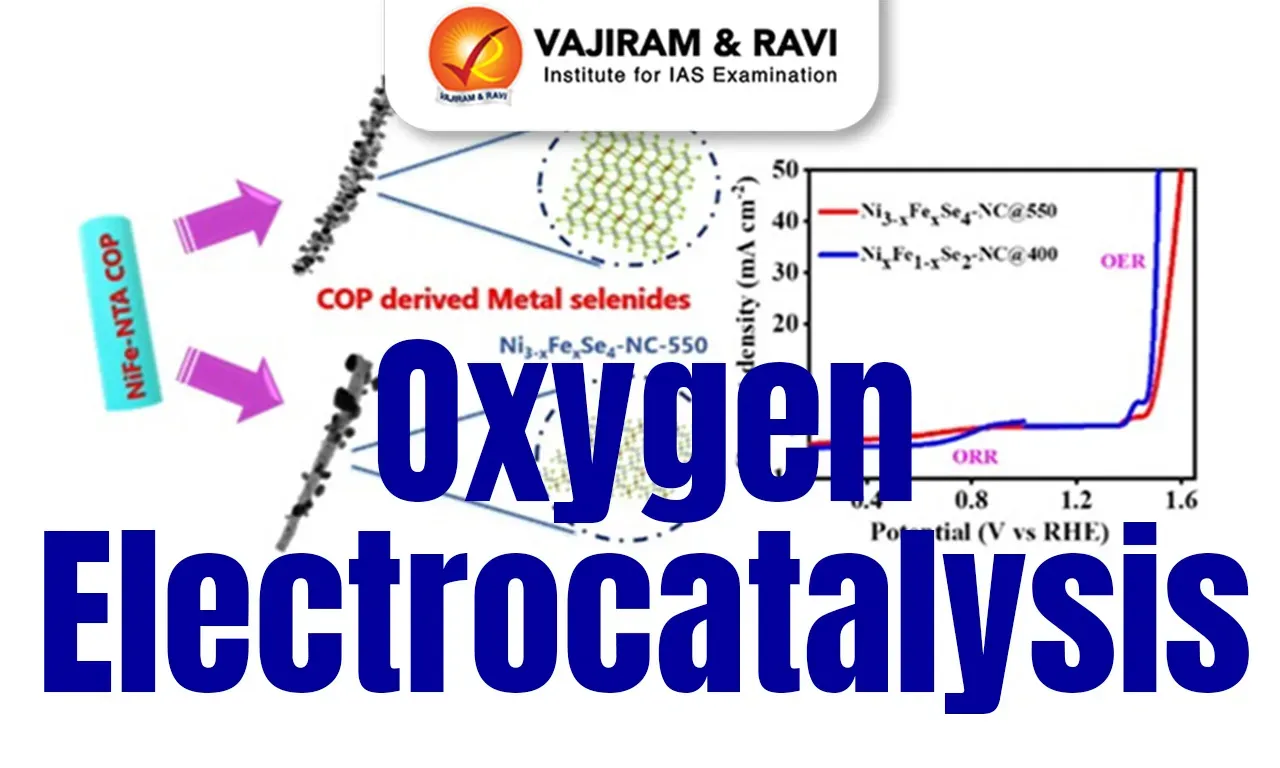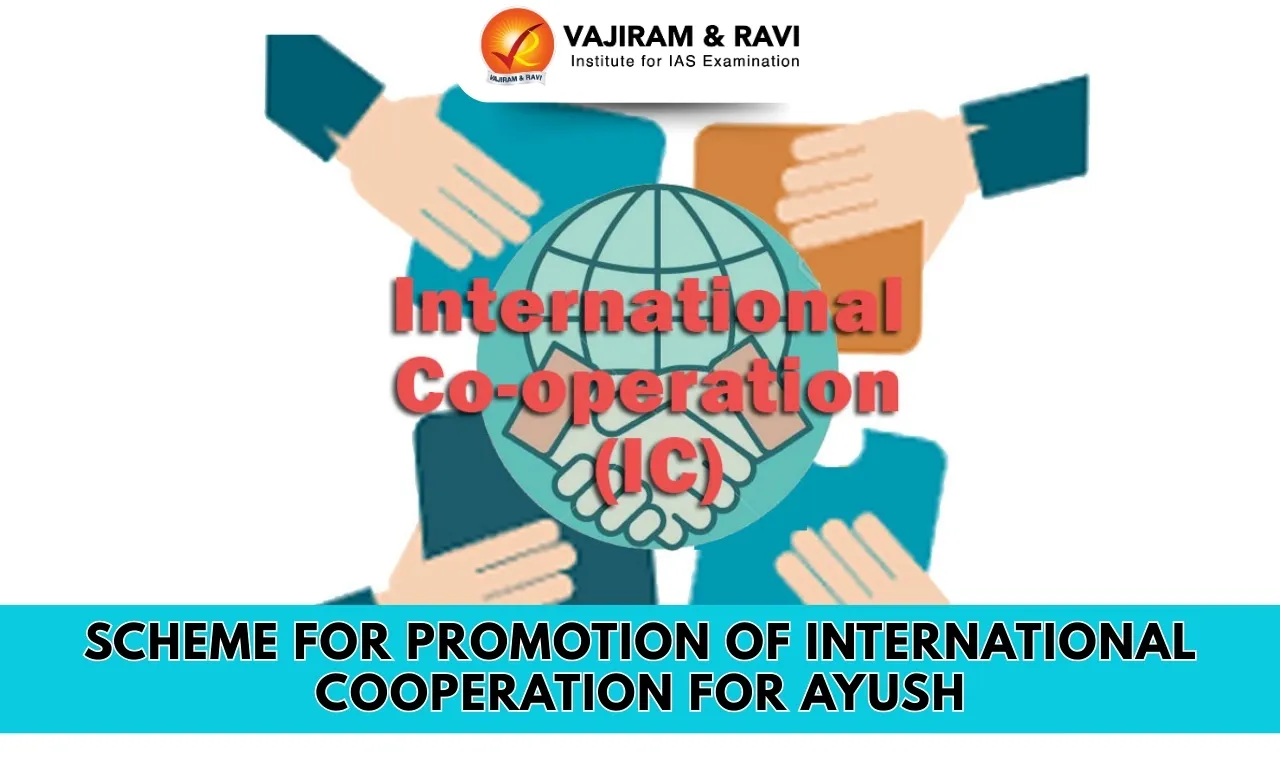Oxygen Electrocatalysis Latest News
Researchers from the Centre for Nano and Soft Matter Sciences (CeNS), an autonomous institute under the Department of Science and Technology (DST), have developed a novel iron-doped catalyst aimed at improving oxygen-related electrocatalytic reactions.
About Oxygen Electrocatalysis
- Oxygen electrocatalysis is a fundamental process in clean energy technologies such as:
- Water splitting for hydrogen production,
- Generation of clean fuels,
- Synthesis of hydrogen peroxide (H₂O₂).
- These technologies face major challenges like slow reaction kinetics, high energy consumption, and high material costs due to reliance on precious metals like platinum (Pt) and ruthenium Ru).
Catalyst Composition and Functionality
- After selenium (Se) incorporation, the researchers created two main catalyst variants:
- NixFe₁−xSe₂–NC
- Ni₃−xFexSe₄–NC
- The most efficient variant, NixFe₁−xSe₂–NC@400, showed outstanding bifunctional catalytic performance for:
- Oxygen Evolution Reaction (OER) – production of oxygen gas,
- Oxygen Reduction Reaction (ORR) – conversion of oxygen into useful chemicals like hydrogen peroxide.
- For OER, this catalyst exhibited lower overpotential and high durability over 70 hours, surpassing conventional ruthenium-based catalysts.
- For ORR, especially for H₂O₂ production, it outperformed platinum-based catalysts in terms of reaction speed, efficiency, and stability.
Innovation in Catalyst Design
- The CeNS team developed a low-cost and efficient catalyst using nickel selenide enhanced with iron (Fe) doping, which significantly improves performance while reducing reliance on expensive precious metals.
- The catalyst was synthesised starting from a metal-organic framework (MOF), known for its high porosity and catalytic potential, but limited by poor electrical conductivity.
- Iron (Fe) doping was used to modify the MOF’s electronic structure, enhancing its catalytic activity by creating more active sites and improving reaction intermediate binding.
- The MOF was further converted into a carbon-rich material using pyrolysis, a high-temperature process that enhanced the material’s electrical conductivity.
Oxygen Electrocatalysis FAQs
Q1: What is Oxygen Electrocatalysis?
Ans: Oxygen Electrocatalysis refers to the acceleration of electrochemical reactions involving oxygen molecules, particularly the oxygen evolution reaction (OER) and oxygen reduction reaction (ORR) in energy devices like fuel cells and water electrolysers.
Q2: Why is Oxygen Electrocatalysis important in energy storage?
Ans: It is crucial for improving the efficiency of renewable energy storage systems, especially in metal-air batteries, hydrogen production, and fuel cells.
Q3: What materials are used as oxygen electrocatalysts?
Ans: Catalysts include noble metals like platinum and iridium, and newer research focuses on non-noble materials such as transition metal oxides, nitrides, and single-atom catalysts.
Source: PIB
Last updated on December, 2025
→ Check out the latest UPSC Syllabus 2026 here.
→ Join Vajiram & Ravi’s Interview Guidance Programme for expert help to crack your final UPSC stage.
→ UPSC Mains Result 2025 is now out.
→ UPSC Notification 2026 is scheduled to be released on January 14, 2026.
→ UPSC Calendar 2026 is released on 15th May, 2025.
→ UPSC Prelims 2026 will be conducted on 24th May, 2026 & UPSC Mains 2026 will be conducted on 21st August 2026.
→ The UPSC Selection Process is of 3 stages-Prelims, Mains and Interview.
→ UPSC Result 2024 is released with latest UPSC Marksheet 2024. Check Now!
→ UPSC Toppers List 2024 is released now. Shakti Dubey is UPSC AIR 1 2024 Topper.
→ Also check Best IAS Coaching in Delhi
Tags: Oxygen Electrocatalysis prelims pointers upsc prelims current affairs

















